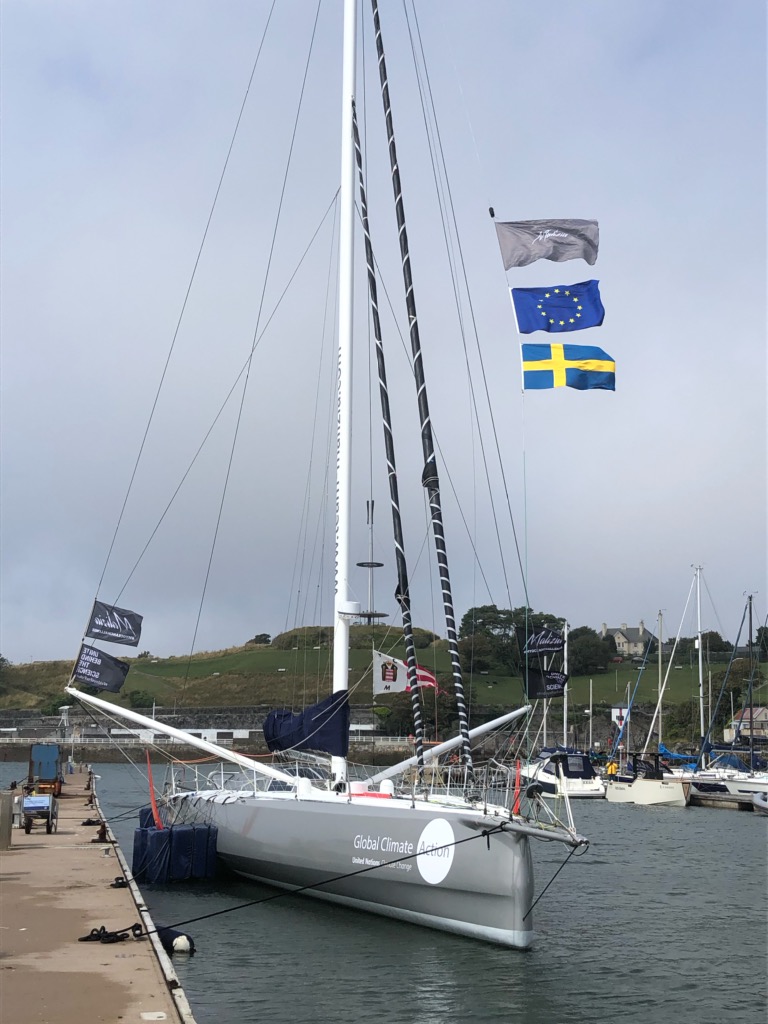At 1500 GMT today (17:00 CET) Greta Thunberg, Boris Herrmann (skipper), Pierre Casiraghi (founder of Team Malizia), Svante Thunberg (Gretas father) and Nathan Grossman (filmmaker) will start their journey to sail from Plymouth to New York.
When you sail, the weather and ocean conditions are interesting, and very dynamic, conditions and boundaries. It is like a framework that sets the rules for your speed, comfort and safety. At the moment and in the future.
The weather changes all the time and as the ship moves it adds a dimension to the change. And it makes the forecasting very interesting. You don’t have to be a meteorologist or weather-geek to appreciate the conversations about how the atmosphere and ocean might, or might not, develop. At home or the office most people hardly notice small and large shifts in the weather. At sea it sets the rules.
Weather is not a mechanical system. No matter how much knowledge or powerful computer you have, you can never be certain about the development of the weather. But you can calculate the most probable development and different envelopes of evolution.
With these at hand, and knowing of how fast you can sail your yacht with different sails at different windspeed, and wind directions, you can calculate where you might be a couple of hours, or days, ahead. -But you have to take into consideration all the small steps in-between. This is called ”routing”, to navigate with respect to weather, waves and currents.
Different team have different goals when they sail. Is it to set a world record, to win a competition or to avoid storms, icebergs, waves and other harsh or dangerous conditions? If the goal was to gain speed you might consider heading north, to make use use of the intense low-pressure located between Ireland and Iceland now and over the weekend.
But the priority of this journey is 1.Safety, 2.Safety and 3.Safety. It will be hard and uncomfortable enough anyway for Greta, Svante and Nathan who has none (Greta) or only limited experience from off-shore sailing like this. The decisions from Boris Herrmann of how they will navigate will of course reflect this.
Someone compared the interior of the yacht to a tin can. It is a somewhat misleading metaphor. A tin can is nowhere near as optimised as this yacht. The tin can is for instance way too heavy in relation to its task and the environment it experiences. The boat is built for high speed sailing and you don’t add anything unless it brings speed or is necessary for safety. Paint for instance.
I was in contact with the team earlier today and they will take a somewhat southerly route. Not as far south so they reach the Trade winds, but just south of the Great circle between Plymouth and New York.

Right now, south of England, they will experience a 260/20(30) kts wind (i.e westerly wind, average speed 20 knots, gusts reaching 30 knots). It is close to head-wind so they will have to go SSW. North of Spain they will turn westward towards the Azores.
In meteorology the Azores are forever connected to sun and calm weather via the name ”The Azores High”, the North-Atlantic subtropical anticyclone. Right now there is a High centered over the Azores. But as Malizia II gets closer this weekend this has changed to low-pressure, a cold front and rain.
If it ain’t climate it is weather. Or ”Climate is what you expect, weather is what you get”. Now if you try to imagine unprecedented fast and very large climate changes. What kind of weather will we get in the future? Oh, btw, the future is already here. And the change accelerate.
Yours,
/Martin

